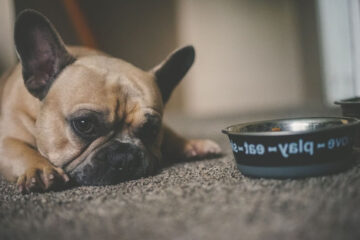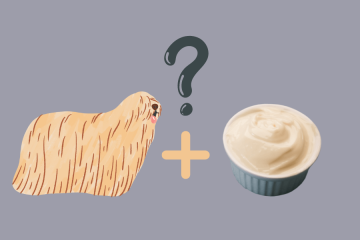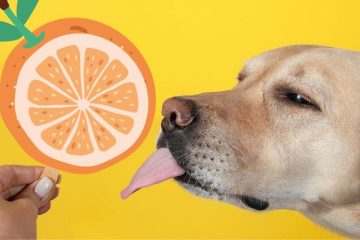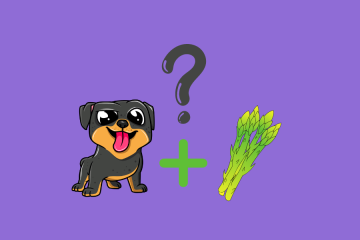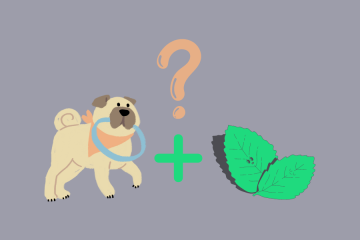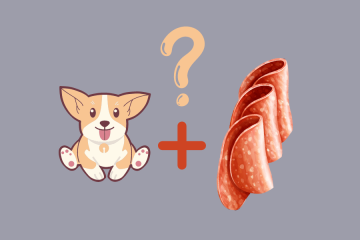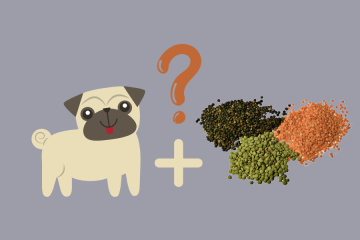Can dogs eat kale? It’s not toxic, but there are a few things to take into account. Veterinarians point out that it contains potentially harmful compounds alongside nutrients. If you’re going to give your dog leafy green vegetables, weigh the risks and benefits carefully.
Key Takeaways
- Kale is neither toxic nor good for dogs ✔️
- A piece of kale every now and then won’t harm your dog ✔️
- Stems contain oxalates which should be avoided ❌
- If your dog eats kale, monitor him for any alarming symptoms
Are There Benefits of Kale for Dogs?

On the one hand, yes. Kale is high in antioxidants, which can help protect the body from damage caused by free radicals. It’s also rich in vitamins A, C, and K, as well as minerals like calcium, potassium and magnesium. All of these could help keep your dog healthy and strong.
However, they’re likely getting all the nutrients they need from their main dog food. A healthy pooch doesn’t need supplements, unless the vet has recommended some. While many vegetables are beneficial to add to your dog’s diet thanks to their fiber content, kale can be quite risky.
Is Kale Harmful to Dogs?
Kale is a cruciferous vegetable, which means it belongs to the cabbage family. Like broccoli, it contains a compound called isothiocyanate, which may cause irritation of the digestive system. The chemical is also converted to thiocyanate, which can inhibit the uptake of iodine by the thyroid gland. Iodine is essential for dogs as it helps regulate their metabolism. Not getting enough can lead to a condition called goiters – enlargement of the thyroid gland.
Additionally, kale contains calcium oxalate, which can form stones in the urinary tract. While these are rare, they can be very painful and cause serious health problems. Some dog breeds are more prone to kidney and bladder stones, such as the Dalmatian, Bulldog and Shih Tzu.
Can Dogs Eat Kale Safely?

Taking the above into account, it may be best to avoid kale as a dog treat altogether, although it’s understandable that you want to give leftover veggies to your pet rather than throw them out.
A couple of kale leaves should be tolerated well by larger dogs. According to veterinarians, broccoli or kale can be toxic if it takes up more than 25% of the dog’s food intake on a given day. It’s advised to keep it below 10% like with other snacks.
If you want to feed your dog kale, mix it in with their regular food and only do so a couple of times a week. This will ensure they get all the nutrients while minimizing any risk of health problems.
Kale for Dogs – Raw or Cooked?
Dogs can eat kale in small amounts, but which is safer: raw or cooked? Cooking kale breaks down the tough cell walls and makes it easier for your dog to digest. If you’re going to steam or boil kale, don’t add salt – too much can be dangerous for dogs.
Some people enjoy baked kale chips. Since you normally add salt and other seasonings to make them palatable, they aren’t safe for dogs to eat either. So if you must feed kale to your dog, stick to the plain cooked vegetable.
Raw kale is more nutritious, but may irritate your dog’s stomach. It can also contain harmful bacteria, like salmonella, so it’s important to wash it well before feeding it to your pet.
What About Kale Ribs?
Another question is, can dogs eat kale stems? They’re called ribs for a reason – they are tougher to chew and digest than the leaves. They contain the dangerous calcium oxalate, too, so when you’re preparing kale for yourself or your dog, throw the stems out. Raw kale ribs can also be a choking hazard for dogs, so it’s best to avoid them altogether. Not like they’d be the yummiest treat for your pet anyway!
What to Do If Your Dog Ate Kale?

Did your pooch break into the bin again? If you’re not sure how much kale they have eaten, or if they have any symptoms like vomiting, diarrhea or constipation, contact your veterinarian. They can advise you on whether to bring in your pet for treatment and help monitor their health. In most cases, a small amount of kale won’t do your dog any harm. However, if you’re at all worried, it’s best to err on the side of caution and watch out for an upset belly.
Verdict: Kale Isn’t Toxic, But Probably Bad for Dogs
So, can dogs eat kale? As you can see, it’s controversial. It’s a good idea to talk to your veterinarian before making any changes to your dog’s diet. In general, it’s best to keep things simple and stick with the same food they’re already eating. That said, small amounts of cooked kale occasionally are unlikely to cause any problems.
Frequently Asked Questions

How Much Kale Is Safe for Dogs?
If you have a large dog, a few leaves of kale shouldn’t hurt them. For a small dog, a few pieces of one leaf should be safe. How your dog reacts to kale depends on their body – some stomachs are more sensitive than others.
Can Dogs Have Raw Kale?
Raw kale isn’t toxic to dogs, but it can cause stomach upset. The leaves are hard to digest, and they might be contaminated with bacteria such as salmonella.
How Do I Prepare Kale for My Dog?
Before giving kale to your dog, steam or boil the leaves without salt or other additives. This is the safest way to serve your pup kale. Cooking the leaves makes them easier to digest.
Can I Feed My Dog Kale Daily?
You shouldn’t feed your dog kale every day, no matter how small the portion. A few times a week is enough, and even then, make sure the kale takes up less than 10% of your dog’s food intake for the day.
Does Kale Cause Gas in Dogs?
Yes, kale can cause gas in dogs if eaten in large amounts. The same goes for other leafy greens, such as spinach or cabbage. If your dog is prone to gas, it’s better not to give them fiber-rich foods like kale.

